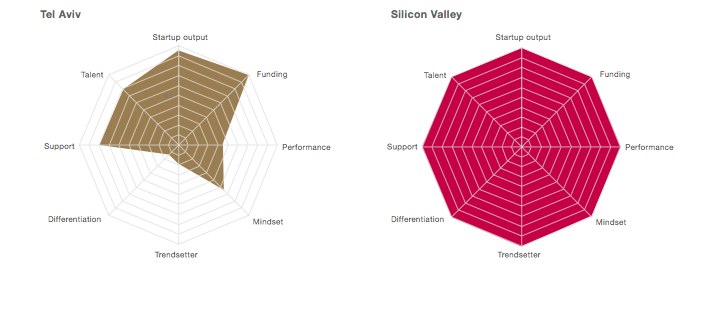When Uber bought a small electric bike company in April 2018, it came as a shock to many. What was behind the acquisition of JUMP Mobility Technologies, an OurCrowd portfolio company? What did it suggest about how innovative companies could stay on the cutting edge of business models and technologies?
A disruptive innovation gives new consumers at the bottom of a market access to a product or service historically only accessible to consumers with a lot of money or skill. These innovators figure out how to compete asymmetrically with market leaders, ultimately overturning — or disrupting — the status quo. New technologies, new business models, social trends or government policy may catalyze this process.
This is exactly what happened in JUMP’s case. Municipalities granted existing bike-sharing vendors in cities like New York, San Francisco and Portland near-monopolies and they naturally grew complacent. These vendors essentially used pre-iPhone technology. Manual bikes needed to be picked up and returned to bulky, and often inconvenient, docking stations. Consumers grumbled about the mobile interface, pricing and the need to return the bike to a fixed rack. Price was often cited as a top complaint. Cities were not happy with the amount of precious real estate the docking racks used.
Disruptors often provide consumers with easier, more convenient alternatives to Market Incumbents, which in turn allows them to take away market share. Disrupting innovations require the integration of multiple, disparate technologies or processes. (Think railroads, cable TV or smartphones.) Incumbents in a market may be too focused on a single technology/process vector and are not always culturally attuned or able to make the leap to the new order of things. They may also be focused on satisfying their current, profitable customers by adding features and functions that make it impossible for new consumers to easily use the product.
A Cultural Shift
Enter JUMP. The company saw the convergence of multiple technological, social and regulatory forces unfolding in urban transportation — and incumbent players were not responding.
First, younger urban consumers were moving to cities, notably such urban centers like Brooklyn, Seattle and San Francisco. For them, bikes were cool and a statement about their values.
Second, cities are being forced to give in to consumer demands to let innovative players into the market. This cultural shift was led by companies like Uber and their concept of “Principled Confrontation.” The idea of a sharing economy, where assets people would have acquired for themselves in the past would now be used on an as-needed basis, or shared. Why buy a bike when you can just “borrow” or “rent” one to get from point A to B?
And third, technological innovations allowed for the development of elegant, dockless JUMP e-bikes. (It developed many of these innovations Why Bought A textbook case of how a small e-bike company can disrupt a market, and how a large company can spot an innovator, provides a strategy map for old and new companies alike Mark Finkel OurCrowd Board Observer at JUMP* JUMP e-bike. The option to pick up and drop off a bike anywhere made it easy for the user 12 Corporate Innovation Report Q4 13 Corporate Innovation under the leadership of its brilliant head of engineering, Nick Foley.)
JUMP had been a significant player in the bike-share market for a number of years. It played multiple roles such as equipment supplier, software provider to operators and operator in smaller markets. The company gave bike-share systems like Social Bicycles, the first ever dockless smart-bikes with integrated GPS, payment systems and locks, freedom to operate.
The company deployed 15,000 bikes into 40 different markets and six countries. It clocked over 5 million rides over the four years before it introduced its e-bike. All along, it was developing the dockless e-bike and had set its ambition on being an integrated bike designer, builder and operator. All the while, the company partnered aggressively with others in the bike-share ecology and developed relationships with city officials, influencers, academics, and consultants. Notably, it also developed its supply chain, enabling it to source and integrate a sophisticated set of technologies and capabilities.
From mid-2017 to early 2018, JUMP received the first (and, to date, only) license for dockless bikes in San Francisco. Shortly thereafter, the company, under the brand JUMP, launched 250 e-bikes in San Francisco. The San Francisco bike-share opportunity is one of the most robust in North America, not to mention a model for other cities.
The company remained laser-focused on its initial market niche and sought to delight an otherwise unsatisfied customer base. It took the time to really understand its core customer base. Loyal fans spread thoughtful messages through social media.
For any enterprise to be successful, the execution of the plan must be focused and crisp. JUMP consistently recruited smart, knowledgeable teammates whose signal character traits were passion about the mission, excellent judgment and a drive to solve problems.
JUMP made service a competitive weapon. Besides having a first-rate group of customer service managers, it swarmed new locations with service. It invested in a great internal communications system where any issues were quickly addressed from multiple functions: engineering, operations and, when necessary, appropriate executive attention.
The operations team made the user experience consistently excellent. Customer experience and support are critical to nurture the early, fragile customer base. When it works well, it turns your customers into your best brand ambassadors. Even if the product is not quite there yet, top services can convince users that the overall product experience is excellent.
JUMP also had an aggressive pricing strategy, further reducing users’ apprehension toward adopting a new product.
Feel Like Superman
The app made it all simple and intuitive. The option to pick up and drop off a bike anywhere made it easy for the user.
Furthermore, it’s a smooth ride. It is pure pedal-assist, meaning that if you don’t pedal, it doesn’t move but when you do pedal, you feel like Superman. The first time I rode a JUMP e-bike, I went from the Bayview neighborhood to the Presidio in San Francisco. This route of course included a number of the city’s famous hills. It wasn’t effortless, but it certainly did not feel like I was working very hard. Let’s just say I arrived at my meeting without being drenched in sweat.
The Uber Bike
From Uber’s viewpoint, the acquisition came to be as a result of a joint venture in San Francisco. It started when JUMP received a permit to operate its e-bikes in San Francisco. Months into the planning process, each team contributed its expertise to launch “Uber Bike” as an embedded option in the Uber App (in addition to Uber Black, UberX). The consumer then saw a map that showed available bikes near them. They could then click on one, reserve it and get a unique unlocking code. The rider could take a ride and leave the bike pretty much where they wanted. The project succeeded beyond JUMP’s expectations, based on any metric: Average rides per bike per day, average fare, average length of trip.
Uber and JUMP entered into preliminary discussions regarding whether an acquisition made sense. Uber previously stated that it intended to be a multi-modal provider of urban transportation.
Generally, an acquirer looks for one or more of the following attributes in a target:
- It expands product offerings
- It expands markets (industry, geography)
- It provides key skill sets through employees
- It has capital assets
- Customers, of course
- Distribution capabilities
- The acquisition removes a competitive threat
In a sense, JUMP fits all of these criteria for Uber. Furthermore, the two companies had strikingly similar market approaches that made for a good cultural fit. Uber had also focused on ease of use, integrating disparate technologies, attractive pricing and disrupting Market Incumbents.
While JUMP was not looking to be acquired, Uber’s cultural and business model aligned and made combining forces an appealing path to scaling for JUMP.
A Morgan Stanley study stated that a strong correlate to a successful merger is the pace at which product lines are merged and sold through a single marketing and channel strategy. This is exactly what Uber and JUMP did in the joint venture.
There are many lessons in this merger for both the early-stage company and the larger, more mature company. The Uber-JUMP story is a textbook case of how a small company can disrupt a market and how a large company can perceive/spot an innovator who has been successful in a nascent and potentially very valuable market. The larger company may not have the internal resources or expertise to take advantage of the market opportunity. This is especially true in the 21st century, when technology and socially-driven market opportunities emerge rapidly and the opportunity may only be winnable by those in the market early.
About the Author
Mark Finkel is a long-time founder, executive and board member of early stage technology companies, in Silicon Valley, US East Coast and Israel. He is currently a Clinical Associate Professor of Entrepreneurship at Yeshiva University in New York City, as well as serving on boards of a number of companies and non-profits. Mark served as a Board Observer at Jump from 2015 until the Uber acquisition in April 2018.
Download OurCrowd’s full Q4 Corporate Innovation Report here.








